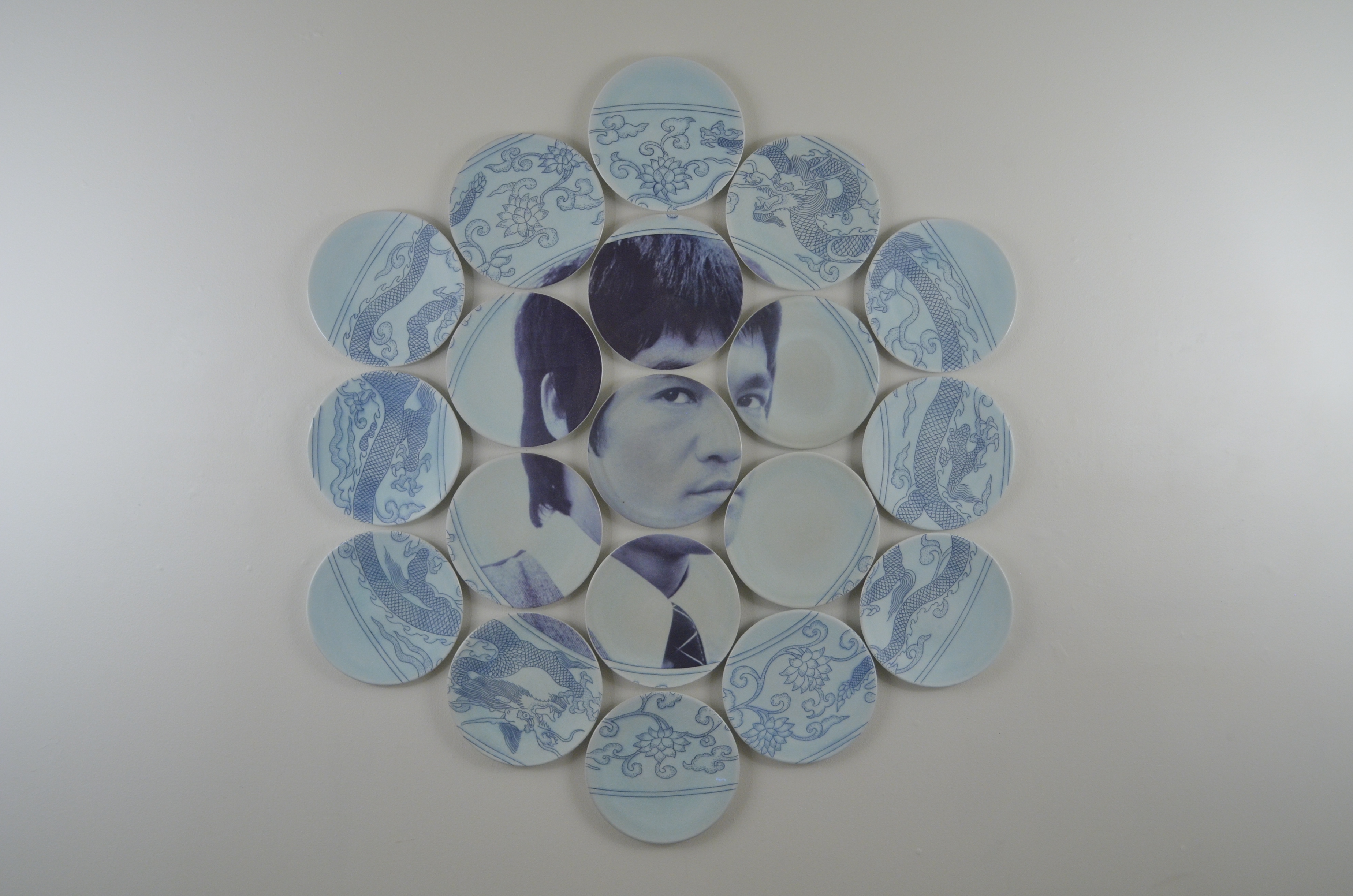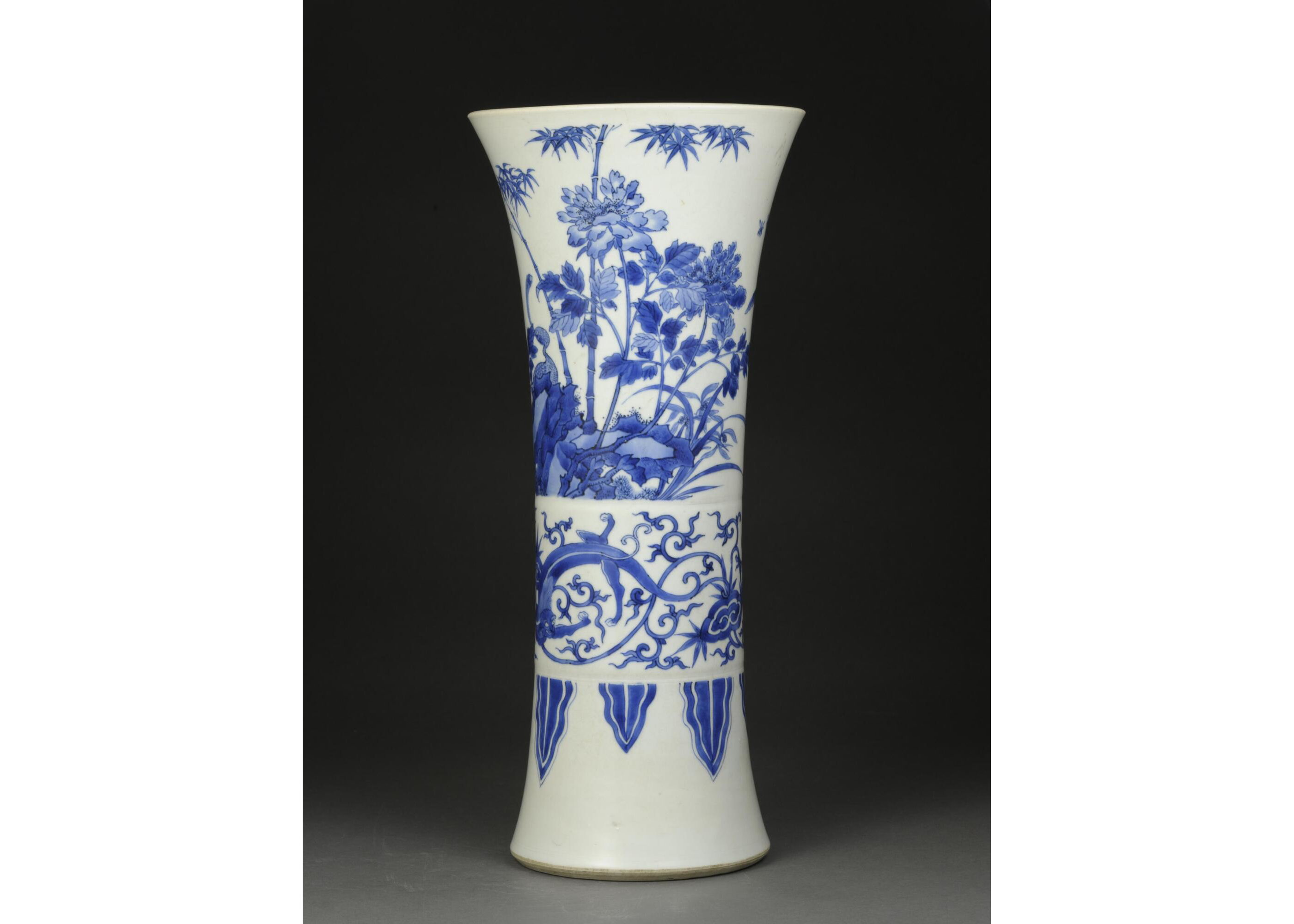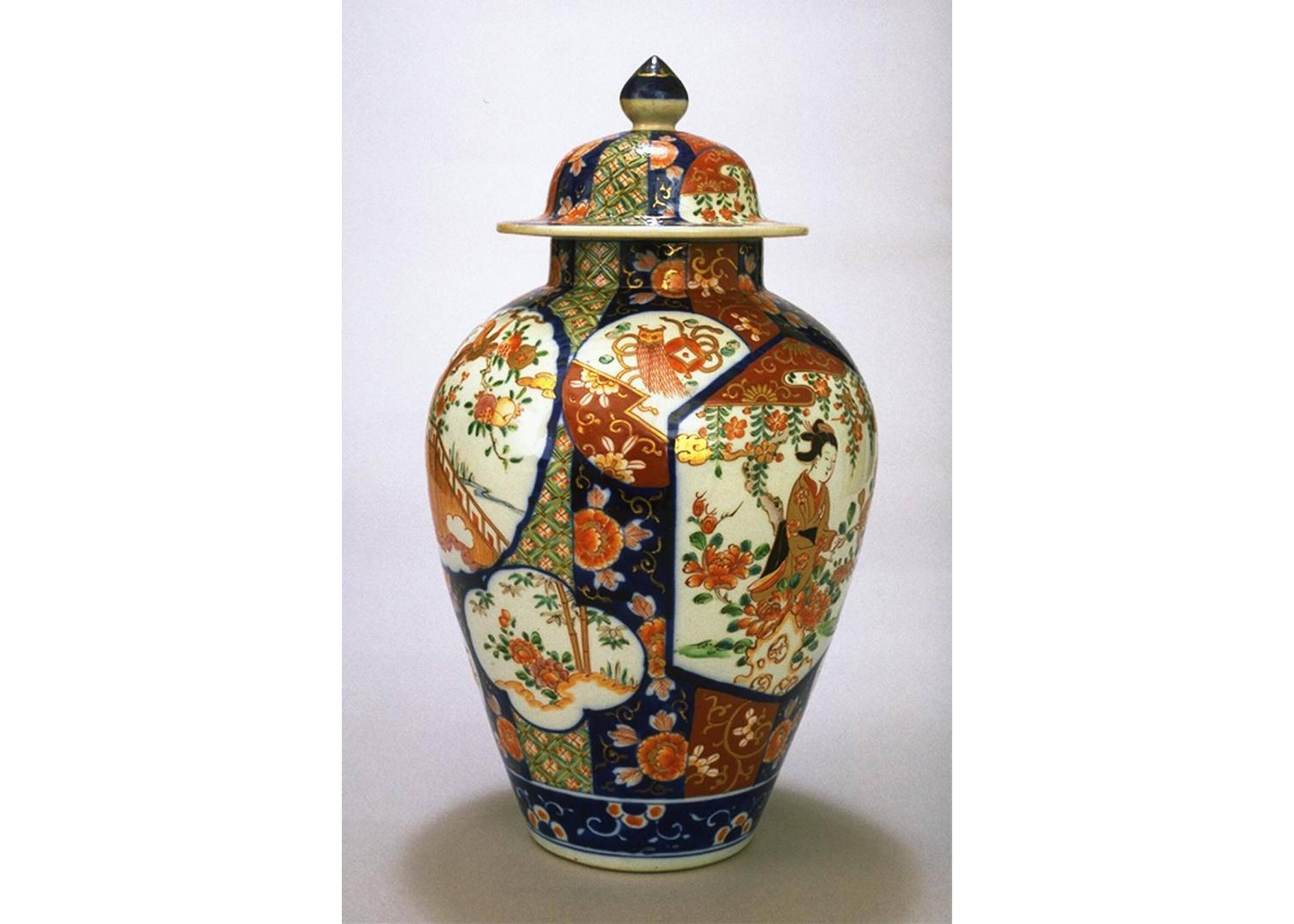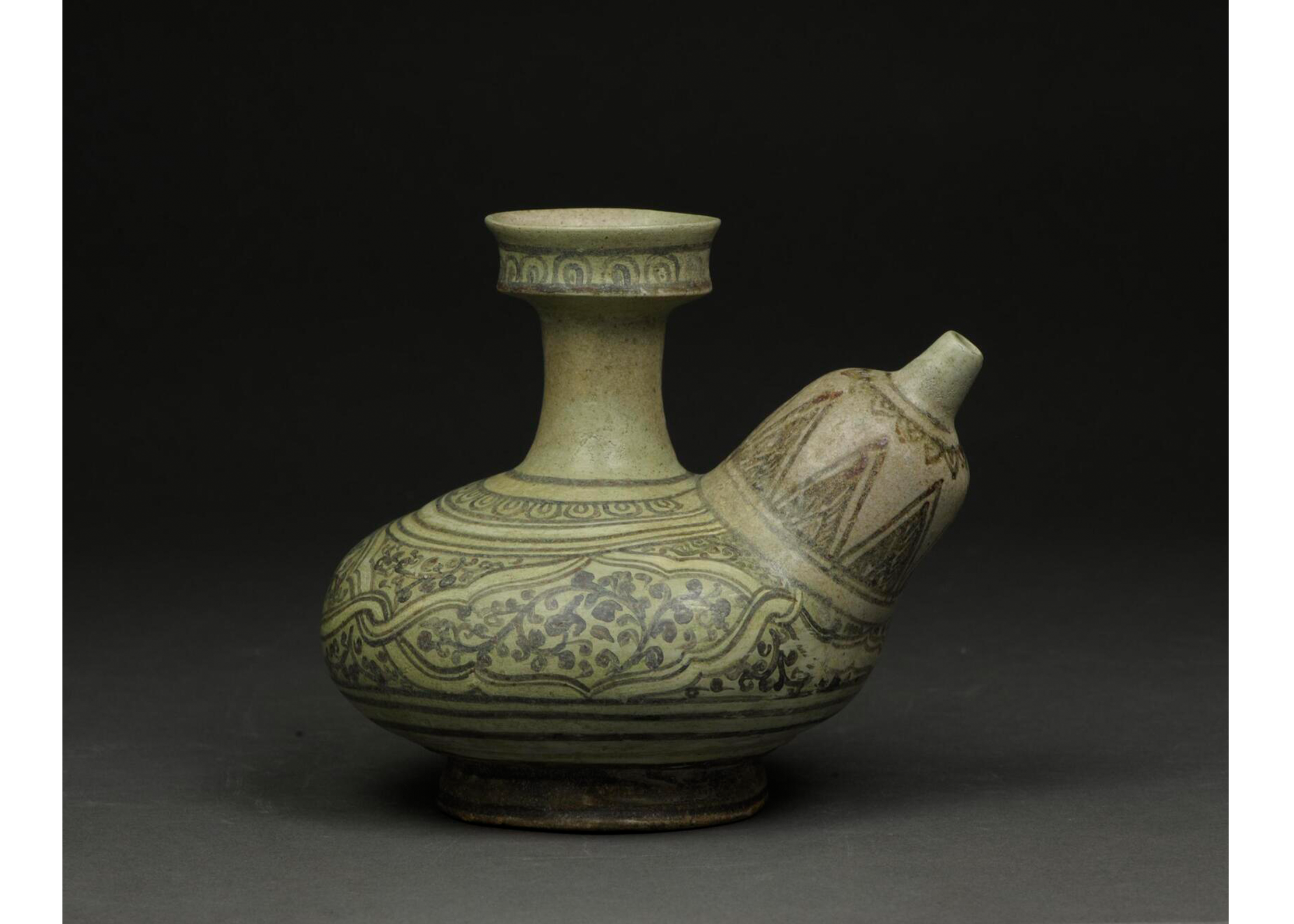Around the World in Blue and White: Selections from the William C. Weese Collection of Chinese Ceramics
Around the
World
in Blue and White
Selections from the William C. Weese Collection of Chinese Ceramics
On view: Dec 2021 - Feb 2024
Natsu Oyobe, Curator of Asian Art

Trace the fascinating and sometimes troubling stories behind the world’s most desired ceramics

The technology and taste for blue and white porcelain originated in China in the fourteenth century, and quickly set off a worldwide craze that lasted five hundred years. Installed across four different galleries at UMMA, this exhibition explores that history and tracks the influence of blue and white ceramics across the globe.
Featured Object
Icon
Steven Young Lee
Steven Young Lee is a contemporary American ceramic artist who interrogates the history and symbolic meaning of blue and white ware. In Icon, he combines an image of Bruce Lee, an iconic Hollywood movie star of East Asian descent, and the dragon and flower-scroll motifs ubiquitous in many exported blue and white wares. The images of Lee and the dragons are fractured across nineteen small circular plates, as if to suggest the distance between the reality of Asia/Asians and how they are imagined in American consciousness.
On view in UMMA’s Chinese gallery

Steven Young Lee, Icon, porcelain, cobalt inlay, and glaze, 2019. University of Michigan Museum of Art, Museum purchase made possible by the William C. Weese, M.D. Endowment for Ceramic Arts, 2021/1.127.A-S. Courtesy the artist and Duane Reed Gallery © Stephen Young Lee
Around the World
Visitors will find Blue and White ceramics throughout four of UMMA’s galleries:
Chinese Gallery
First commissioned by Muslim merchants living in China, blue and white porcelain found its way to Southeast and East Asia, the Middle East, the eastern coast of the African continent, and then to Europe and North and South America. In the Chinese gallery, see a grand display of these highly coveted items. Many of them traveled from China to the Netherlands via Dutch East India Company ships, along with tea, silks, paintings, and other luxury items.

Beaker vase
Ming dynasty (circa 1640)
porcelain with blue underglaze painting
17 3/4 in. (45.08 cm)
Promised gift of William C. Weese, M.D., LSA ‘65
Korean Gallery
Chinese blue and white porcelains have been exported to Korea since the early 15th century. Korean kilns also produced regional porcelains with expensive cobalt imported from China. In the Korean gallery, see a magnificent dragon jar and scholarly implements used by social elites.

Ceramic Screen in Wood Frame
Qing dynasty (early 19th century)
porcelain with blue underglaze painting and wood
17 x 11 3/4 in. (43.18 x 29.85 cm)
Promised gift of William C. Weese, M.D., LSA ‘65
Japanese Gallery
Japanese blue and white porcelains rose to prominence as replacements of Chinese porcelains in the early 17th century, and continued to be popular exports in the European market. In the Japanese gallery, see porcelains in various forms and decorations that show mutual inspirations of the two global brands.

Japanese
Covered Imari jar with scene of young woman playing a koto
1820-1850
porcelain, blue underglaze and enamel overglaze
16 9/16 in. x 9 7/16 in. ( 42 cm x 24 cm )
Gift of the William T. and Dora G. Hunter Collection
South and Southeast Asian Gallery
Thailand and Vietnam long produced their own local versions of expensive Chinese blue and white porcelains. In the South and Southeast Asian gallery, find fascinating examples of these copies using clay and glaze local to those regions. In addition, salvaged pots from a late 17th century shipwreck tell the story of the vibrant global market and fervent demand for blue and white ceramics.

Kendi
15th-16th century
stoneware with cobalt underglaze painting
5 3/4 in. (14.61 cm)
Promised gift of William C. Weese, M.D., LSA ‘65
This exhibition celebrates the new William C. Weese Collection of Chinese Ceramics and the endowment to establish the William C. Weese Program for Ceramic Arts at UMMA.






![Platter with an inscription from a Hadith [a saying of the Prophet Muhammad], signed by Ali ibn al-Hajj Muhammad A blue and white platter. White porcellanous body with painting in blue under a clear glaze slightly tinged with blue-green.](https://exchange.umma.umich.edu/media/W1siZiIsIjIwMjIvMDUvMjUvM2o5eW1tNXU5b19kZWZhdWx0LmpwZyJdLFsicCIsInRodW1iIiwiMTAwMHgxMDAwIl1d?sha=d190d2c6f89170c2)